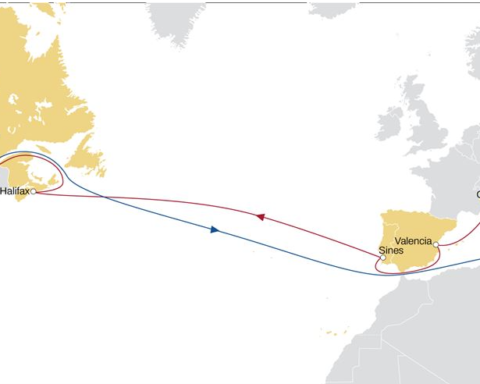The Chinese New Year celebrations that have just ended will bring no relief to shippers. With the exception of routes to and from Northern Europe, spot rates for the transportation of containerized cargo will not be coming down by even a cent. Quite the contrary.
The Norwegian analysis company Xeneta confirmed this in a post published on Linkedin. The consultancy firm explains how the pandemic crisis, now in its fourth wave, has negatively impacted trade dynamics, keeping the transport rates high that, in the usual Chinese break, tend to fall.
«A backlog of boxes waiting for exports in the Far East mean little respite for the hard-pressed market», says the post The ports of the Far East are apparently still clogged up due to the well-known congestion problems: vessels are not handled on time and delays accumulate. This is why, according to Xeneta, there will be no respite for a market that appears to be under increasing pressure.
With reference to the three main routes from the Far East, only North European imports have reported a slight trend reversal, with rates dropping by 62 US dollars per forty-foot container (FEU) between January 15th and February 7th . This is an insignificant downturn considering that freight rates on this trade route currently run around $14,736 per FEU.
Instead, since mid-January, U.S. imports have risen by $382 per FEU along trades bound for West Coast ports and by as much as $603 on the opposite shore. The greater increase in the cost of long-haul transatlantic services would demonstrate the desirability of these ports over, say, the now ultra-congested California ports.
According to analysts, 2022 will be a different year from all the others. If, in previous years, prior to the New Lunar Year, it was not uncommon for carriers to resort to cancelling certain departures in order to cope with the slowdown in traffic caused by the lower productivity of Chinese manufacturing companies, this time they will not have to struggle so much. The low Chinese industrial production rate will be largely offset by the need to clear the backlog of export orders. The temporary closure of certain Chinese ports , due to Covid, has certainly contributed to making the situation worse.
It remains critical and uncertain, according to Alice Arduini, owner of Alix International Freight Forwarders, “Before Chinese factories closed to celebrate the New Year, many shippers rushed to book spaces on board ship, for fear of being left ashore. China reopened on Monday and I can assure you that it is almost impossible to load cargo before the end of the month and rates remain sky high. It feels like we’re still in the pre-Chinese New Year period.”
To sum up, spot rates will remain high for many more months to come, according to Xeneta. The consultancy firm points out that it’s hard to assume that transportation rates will decline enough to support a return to pre-pandemic levels. They believe that the downturn in freight rates will happen, but it will be slow. This is because carriers will inevitably have to continue to deal with congestion and supply chain disruption issues. This will be especially noticeable during the upcoming peak season in July and September.
Likewise, customs broker and logistics operator, Alessandro Laghezza retains that the high freight rates that have made the big carriers smile over the last few years are not destined to last forever. “This is a phenomenon, also a form of speculation, which in the medium to long term risks no longer being sustainable,” he says. “However, the situation should fall below the guard levels already from 2023, when the new ships ordered over the last few years will come into operation.”
The increase in cargo capacity will encourage a progressive return to normality. Not only: “The new reorganization of production processes at international level could have an impact on freight ratestoo” Laghezza points out. “This emphasizes how the persistent crisis conditions are progressively pushing the companies to relocate their own manufacturing and industrial activities. There is a return to the country of origin of activities that had been moved abroad.”
To be very brief, the freight forwarder from La Spezia believes that companies are reorganizing themselves in the attempt to shorten an increasingly fragmented logistic chain: “There has been an increasing demand for warehouses and logistic spaces – Mr. Laghezza points out – “Companies are reviewing their choices in relation to the difficulties of the logistic chain. The reorganization of supplies could therefore alleviate the pressure on maritime traffic and freight rates.”
While new geo-economic balances are being redefined, however, another problem is road haulage rates: “The high cost of diesel fuel is having a significant impact on land transport prices. The situation is becoming unsustainable, something has to be done.”
Translation by Giles Foster




